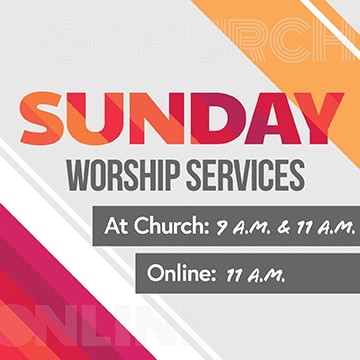By Bob Pritchett
Throughout the COVID-19 pandemic, churches across the country have struggled to feel like they’re “getting it right.” Remain online for too long, and some congregants are critical of the leadership’s respect for biblical fellowship. But resume in-person church gathering too soon, and just as many if not more attendees are disgruntled by the potential health and safety risks.
Of course, with today’s technology, it’s always possible to offer church online and in-person, providing the best of both worlds. But live-streaming the sermon and worship service simultaneously as running them on stage feels like double the work, putting already thin-stretched church staff and leadership under even more stress, which is the opposite of what’s needed during a global crisis.
Making in-person and online church accessible to every congregant doesn’t have to be a headache or a time-waster. The key is knowing how to run engaging live stream and in-person church services concurrently by utilizing the right tools.
The first step is deciding what you want people to see when they come to church online.
You could go minimal, showing only a camera live feed of the service on a live stream, a more simple but still effective solution. However, suppose you want the online experience to feel as engaging and immersive as it would be in-person. In that case, you can create a correlating live stream presentation that encourages those joining from home to sing along in worship and follow along with the sermon. This is an excellent feature to include, as it helps those who tend to view passively at home to become participants.
Integrating a presentation in the live stream that shows at-home viewers worship slideshows, sermon verses and references on screen and any videos used ensures that individuals attending from home are just as much a part of the congregation.
When taking this approach, the next step is determining how you want your live stream and in-person presentations to look.
How will you use lower-thirds, camera feed and full-screen slides to create a visually engaging experience that helps viewers follow along?
Here are a few options:
- Use lower-thirds slides for both live stream and in-person services, so that what’s happening on the stage will always be visible.
- Utilize full-screen slides for your in-person service and the lower-third for your live stream.
- Consider a mixture—such as using lower-thirds for live-streaming songs, but full-screen slides for the sermon and videos.
- Show a live camera feed and presentation slides simultaneously using a software encoder with Open Broadcaster Software.
Now that you’ve considered what approach you want to take for conducting in-person and online, the next step is setting up your equipment.
If you decide to show a live stream view—or the same presentation and camera feed for both those in the sanctuary and those at home—you can skip this step!
Otherwise, here’s how to set up your equipment:
If you have a presentation switcher, you can switch the live stream feed from the camera to slide and back again (while your sanctuary’s screens remain on your slide).
If you don’t have a presentation switcher, you can enable a software encoder to switch views instead. Instructions vary based on which software encoder you use, but here’s an example of one way you might do: prepare two scenes, one with your on-screen camera and one with your presentation. Then, set up quick commands or “hotkeys” to switch between them on the air.
While all of these steps are essential to the integration of visually engaging online church, we must remember that one of the main points of being part of a church family is to be in community with other Believers.
No matter how technologically savvy or aesthetic your live-stream church services may be, they lack value if they do not somehow cultivate a community component.
Now that your live-stream and in-person church service is ready to go, consider incorporating community facilitation through the following steps.
- Start conversations during the live stream. Some churches do this on Sundays with a simple question of the day posted before the service that people can answer in the live stream chatbox moderated by staff and volunteers who work to keep the conversations going. Others will drop quotes from the sermon or illustrations into the chat.
- Guide your congregation through the service using their phones. One of the most seamless ways to integrate this is by creating an app for your church that syncs to the sermon slideshow. This way, congregants can click on verse references as they appear, add events to their phone calendar that are announced in videos and even give to the church during the sermon so that they don’t forget to do so.
- Incorporate fun Bible trivia before the sermon in the live stream chatbox or on the beginning presentation slides. Consider including multiple-choice questions or polls that people can respond to in the chatbox. This is a great way to keep the families watching from home engaged as they brainstorm together and allow those viewing from home alone to get to know the names of different congregants in the chatbox as they submit their answers.
- Encourage people to share their prayer needs in the live stream chatbox. This gives individuals a chance to ask for specific prayer and to engage in prayer on behalf of their fellow church members. Especially for individuals and families who are watching from home, this is a crucial element to encourage, as you never know what people may be enduring in isolation without the relief of being able to receive in-person prayer.
Pandemic or no pandemic, there will always be a need for online church. It’s an excellent option that accommodates individuals with disabilities, those who take care of sick loved ones at home, those who are ill and those who frequently travel on the weekends.
Learning how to hold successful online and in-person church services is critical not only for the duration of COVID-19 but also for all congregants in need of a church family that desires to accommodate various needs of the church.
Bob Pritchett is the co-founder and CEO of Faithlife, a church technology company helping churches grow in the light of the Bible with more than 14 products, including Logos Bible Software, www.faithlife.com.















